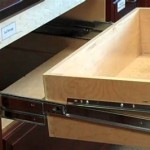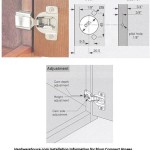Tiny White Bugs in Kitchen Cabinets: Expert Guide to Identification and Eradication
The presence of tiny white bugs in kitchen cabinets can be an unsettling discovery, threatening the cleanliness and hygiene of your kitchen. These uninvited guests can multiply rapidly, contaminating food and creating an unhygienic environment. Identifying the type of bug accurately is crucial for implementing effective eradication measures.
This comprehensive guide will shed light on the most common types of tiny white bugs found in kitchen cabinets, their causes, and proven methods for eliminating them. Armed with this knowledge, you can restore your kitchen to its pristine condition, ensuring a safe and hygienic space for food storage and preparation.
Common Types of Tiny White Bugs in Kitchen Cabinets
Several species of tiny white bugs can infest kitchen cabinets, each with distinct characteristics and behaviors:
- Flour Beetles: These small, reddish-brown beetles are attracted to stored food products, particularly flour and grains. Their larvae are tiny, white, and worm-like.
- Indian Meal Moths: These moths have white wings with dark markings and lay tiny, white eggs on food packaging. Their larvae, known as "mealworms," are white or cream-colored.
- Rice Weevils: These tiny, brown beetles infest rice, pasta, and other grains. Their larvae are white and cylindrical.
- Psocids: Also known as "booklice," these insects are small, white, and wingless. They feed on mold and decaying organic matter.
Causes of Tiny White Bugs in Kitchen Cabinets
Understanding the causes of tiny white bug infestations is essential for preventing future occurrences:
- Stored Food Products: Unsealed or improperly stored food, such as flour, grains, and cereals, attracts bugs seeking sustenance.
- Moisture: Damp or humid environments provide a breeding ground for insects like psocids.
- Crumbs and Debris: Food crumbs, spills, and other organic matter left in cabinets attract pests.
- Infested Items: Bringing infested food items into the kitchen can introduce bugs into cabinets.
Effective Eradication Methods
Eliminating tiny white bugs in kitchen cabinets requires a multi-pronged approach:
- Cleanliness: Thoroughly clean all cabinets, removing crumbs, debris, and spills. Vacuum the interior and use a damp cloth with a cleaning solution to wipe down surfaces.
- Inspect Food Products: Check all stored food items for signs of infestation. Discard any contaminated items immediately.
- Seal Food Properly: Transfer food into airtight containers to prevent bugs from accessing it.
- Use Traps: Place sticky traps or pheromone traps in cabinets to capture bugs.
- Natural Repellents: Bay leaves, cinnamon sticks, and cloves can deter insects.
- Professional Pest Control: In severe infestations or for persistent problems, consider professional pest control services.
Prevention Tips
To prevent future infestations, follow these preventive measures:
- Keep Cabinets Clean: Regularly clean cabinets to remove food debris and crumbs.
- Store Food Properly: Store food in airtight containers to prevent bugs from accessing it.
- Check Food Before Storing: Inspect food items before storing them in cabinets to avoid introducing infested items.
- Use Bay Leaves: Place bay leaves in cabinets to repel bugs.
- Regularly Inspect Cabinets: Check cabinets periodically for any signs of infestation.
By following these comprehensive measures, you can effectively eliminate and prevent tiny white bugs in kitchen cabinets, ensuring a clean and hygienic food storage environment.
Sydney Woman Finds White Mites On Her Kitchen Tap

What Are Those Tiny White Bugs Around Your Home

Types Of White Bugs Including Tiny Pictures And Identification

16 Bizarre Tiny White Bugs That Look Like Dust And Lint

How To Get Rid Of Mould Mold Mites Eradipest

Types Of White Bugs Including Tiny Pictures And Identification

Our Experts Share Their Top Tips On How To Get Rid Of Pantry Bugs

Omg What Are These Tiny Bugs On My Kitchen Handles Mumsnet

13 Tiny White Bugs That Look Like Dust And Lint

9 Commonly Found Little Bugs That Looks Like Lint Or Dust A Z Animals
Related Posts








